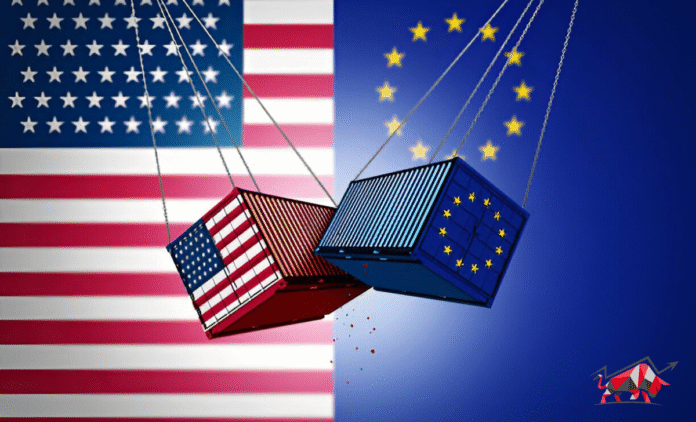The European Union (EU) has replaced a formerly complex “netting mechanism” proposal with a simpler offer aimed at resolving its most pressing trade dispute with the United States. Under the new plan, Brussels would scrap its existing 10% tariff on American-made vehicles if Washington reduces its own auto duties to below 20%.
This simplified tit‑for‑tat approach emerges amid escalating tensions after US President Donald Trump imposed a 25% tariff on foreign cars and parts in March, with reciprocal tariffs poised to increase from 10% to 30% unless an agreement is reached by 1 August.
Negotiators are reportedly debating whether Washington might lower its tariffs to 17.5% if Brussels removes its own; the European Commission is also pushing for reduced tariff quotas on specific vehicle types.
From complex offsets to content-based credits
Initially, Germany and Sweden championed a netting mechanism that would allow automakers to offset import duties with export activity. That plan sparked disagreement among EU members without substantial US manufacturing presence, who feared the measure would favour German firms.
Talks recently proposed a content-based credit system—allowing carmakers to apply credits based on US-made components in their exports. Nonetheless, Volvo’s CEO Håkan Samuelsson warned that, “even if tariffs were lowered below 20%, … [we] would not be able to manage without export credits”.
BMW CEO Oliver Zipse added that jeopardising Europe’s export model to the US would ultimately harm American consumers too.
Sticking issues: standards, quotas and other sectors
Even if tariffs are cut, exporters face persistent barriers. US-built cars often fail to meet EU safety standards, and many are hit by higher taxes on large engines. The EU is willing to approve US test labs, but only under existing EU safety regulations.
Meanwhile, the broader EU‑US negotiations remain unresolved. Brussels wants an exemption from any future US tariffs targeting pharmaceuticals and semiconductors. It strongly opposes a proposed 17% duty on EU agricultural food products.
Member‑state reactions and political dynamics
Germany and Sweden—Europe’s largest auto exporters—drove the initial offset approach. But other EU nations, fearing disadvantage, raised objections.
Berlin itself backtracked after analysis and objections, including lack of US support, showed the netting plan had uneven benefits. US officials reportedly preferred a straightforward zero‑tariff announcement over a convoluted mechanism.
Implications for transatlantic trade
This shift underscores a clear tactical move: simplify now to avoid escalation. With Trump-era reciprocal tariffs looming by 1 August, Europe appears keen to reach a deal before the deadline.
However, negotiations remain fragile. The US is also pushing for a 15–20% baseline tariff on all EU goods, and both sides are preparing retaliatory instruments covering billions of euros in trade.
Opinion: a cautious step towards de‑escalation
The EU’s pivot from a technical offset system to a more transparent tit‑for‑tat offer is a clever tactical retreat. By removing complexity, Brussels reduces the risk of breakdown in negotiations and enhances political acceptability across member states.
That said, this deal marks only a partial milestone. While car tariffs are a high‑stakes sector, true resolution demands addressing broader concerns: harmonising standards, securing exemptions in pharmaceuticals and semiconductors, and protecting agri‑food sectors. In short, this is one skirmish won in a larger trade war.
For automakers on both sides, the proposal could offer much‑needed clarity and relief—if Washington follows through. Yet unless both parties commit to structural reforms on testing, quotas and future tariffs, the looming threat of escalation may simply shift from headlines to next year’s negotiations.


